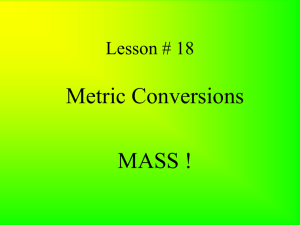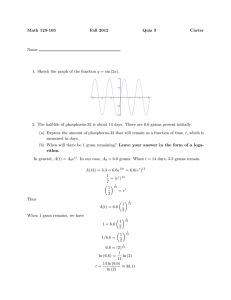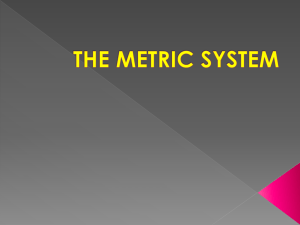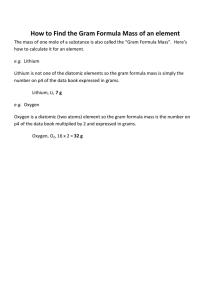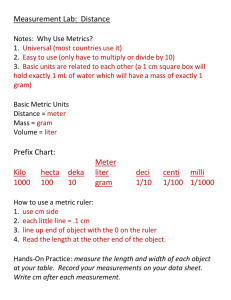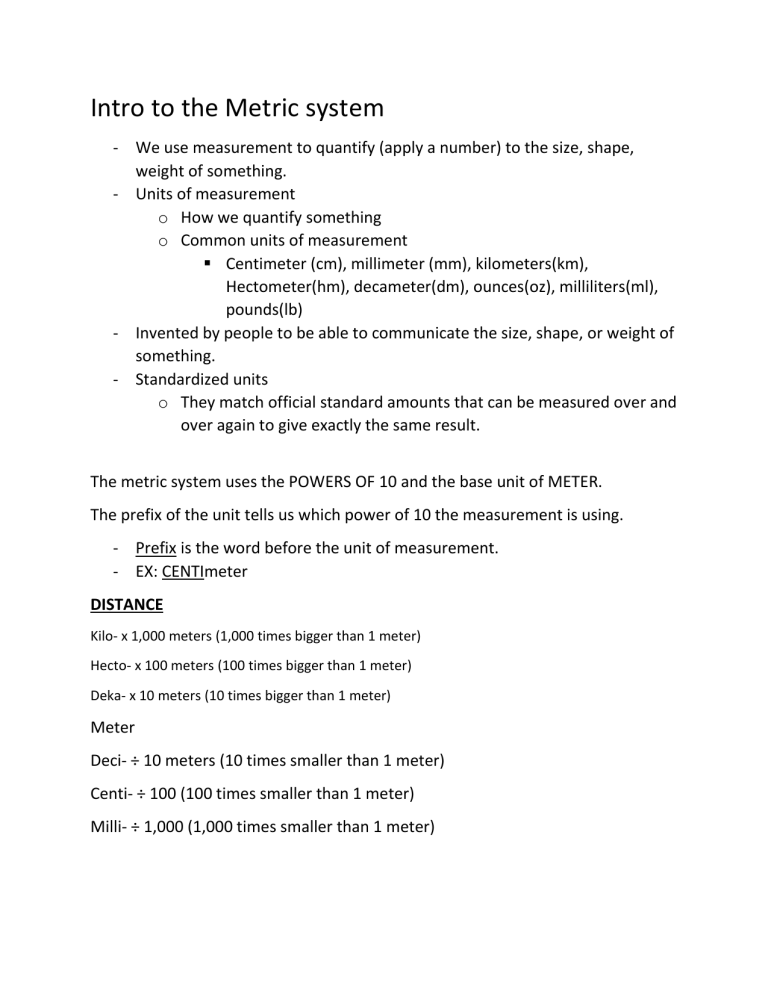
Intro to the Metric system - We use measurement to quantify (apply a number) to the size, shape, weight of something. - Units of measurement o How we quantify something o Common units of measurement Centimeter (cm), millimeter (mm), kilometers(km), Hectometer(hm), decameter(dm), ounces(oz), milliliters(ml), pounds(lb) - Invented by people to be able to communicate the size, shape, or weight of something. - Standardized units o They match official standard amounts that can be measured over and over again to give exactly the same result. The metric system uses the POWERS OF 10 and the base unit of METER. The prefix of the unit tells us which power of 10 the measurement is using. - Prefix is the word before the unit of measurement. - EX: CENTImeter DISTANCE Kilo- x 1,000 meters (1,000 times bigger than 1 meter) Hecto- x 100 meters (100 times bigger than 1 meter) Deka- x 10 meters (10 times bigger than 1 meter) Meter Deci- ÷ 10 meters (10 times smaller than 1 meter) Centi- ÷ 100 (100 times smaller than 1 meter) Milli- ÷ 1,000 (1,000 times smaller than 1 meter) 1000.000 km hm dam m dm cm mm 1 Kilo = 1000m 1 hectometer =100m 1 deka = 10m 1 deci = 0.10m 1 centi = 0.0100m 1 milli = 0.0010m MASS in the Metric System - The weight - Is how much actual matter the object contains. - Measured in grams (g) Different prefixes are applied to the base unit of GRAM to indicate the mass of something. 1 gram = 1cm3 of water (cubed = volume) Kilo- x 1,000 grams (1,000 times bigger than 1 gram) Hecto- x 100 grams (100 times bigger than 1 gram) Deka- x 10 grams (10 times bigger than 1 gram) GRAM Deci- ÷ 10 grams (10 times smaller than 1 gram) Centi- ÷ 100 grams (100 times smaller than 1 gram) Milli- ÷ 1,000 grams (1,000 times smaller than 1 gram) 1000.000 kg hg dag g gd cg mg
